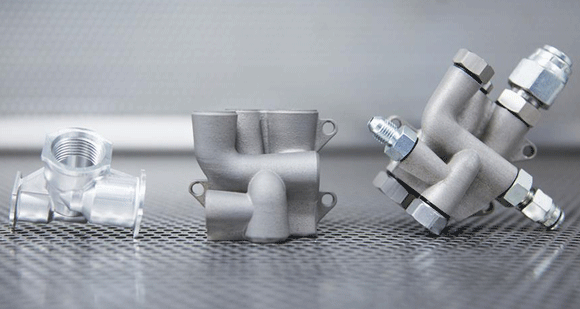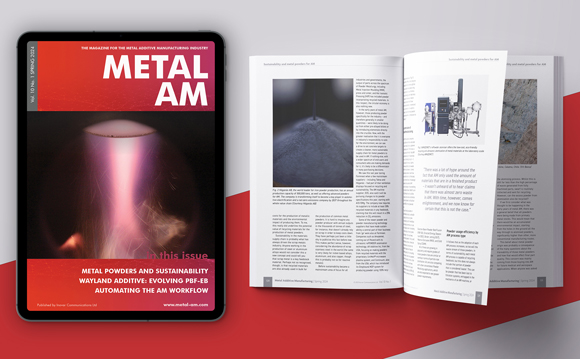Renishaw Additive Manufacturing technology increases Land Rover BAR’s performance
January 17, 2017

The UK’s Renishaw plc, headquartered in Wotton-under-Edge, Gloucestershire, has reported on the development work using both plastic and metal Additive Manufacturing processes in the Land Rover BAR America’s Cup project. The company has helped incorporate Additive Manufacturing into daily use at Land Rover BAR via the project team’s Technical Innovation Group (TIG), of which Renishaw is an official supplier.
TIG project manager, George Sykes of PA Consulting stated, “We use 3D printing at three different levels within the team. The simplest level is as a prototyping and visualisation tool. We manufacture a large number of custom parts and 3D printing allows us to make full size prototypes in-house before we commit to a design.”
“The prototyping process is really useful when we are trying to develop something,” said Land Rover BAR’s Chief Technology Officer, Andy Claughton. “It allows us to get our hands on it, put it in place on the boat or link it up with other parts of the system and see potential issues and refine the design before we commit to the production of the final piece.”
The team has its own, fully equipped traditional machine shop, and it has an extensive composites team. Between them, these facilities can make almost anything, but if the final part can be additively manufactured then that’s the option that will be used.
Saving weight
“The potential of Additive Manufacturing in terms of saving weight and improving efficiency is tremendous,” explained Claughton. “For example, we took a long hard look at our hydraulics system. Before 3D printing came along all the parts in this system would have been manufactured by taking metal away from a solid block. The shapes that you can create with this method are limited, so the design is limited and so too is the efficiency.”
“Hydraulic fluid doesn’t take kindly to going around hard corners for instance, and there is a loss of power when it has to do so. With traditional techniques this might be the only way you can manufacture the part, but with additive manufacturing you can build it with smooth rounded corners that significantly improves efficiency in the fluid transfers involved,” continued Claughton.
“In addition to the improvements in efficiency, we can now build it much more lightly as we are only adding material specifically where it is needed. In the past, the geometry of manufacture on a lathe or other cutting tool meant that some material couldn’t be removed and we would have to carry around the excess weight. No longer.”
Renishaw has manufactured several parts for the hydraulics, and while the team are reluctant to reveal too much design detail, it has said that weight in a new AM manifold design was reduced by 60%, with an increase in performance efficiency of better than 20%.
David Ewing, Product Marketing Engineer at Renishaw’s Additive Manufacturing Products Division, commented, “Our involvement with Land Rover BAR is also helping to raise the bar in Additive Manufacturing. It’s a complex manufacturing option and there are considerations both in component design and process expertise. The best applications are ones which use the minimum amount of material to achieve the design requirements, offer a functional benefit in service and have been designed with the manufacturing method in mind. Our work on hydraulic parts for the team is a perfect example.”
http://land-rover-bar.americascup.com/en/technical-innovation-group.html
















